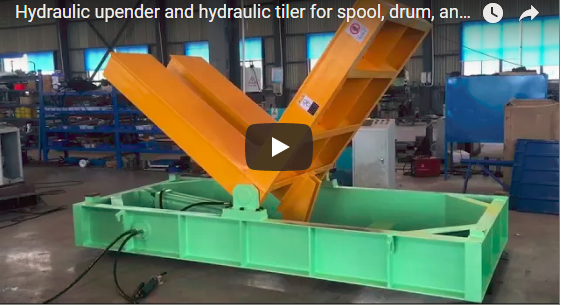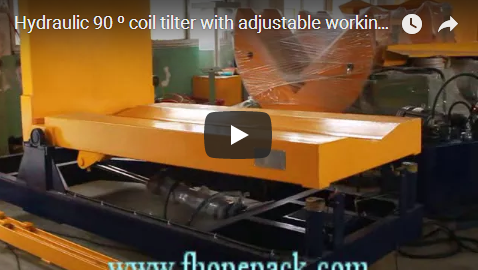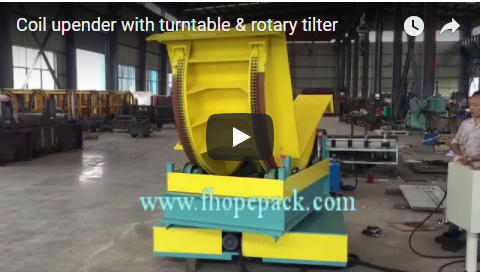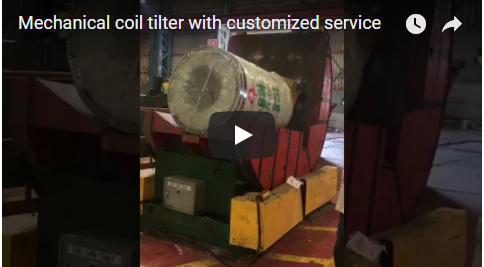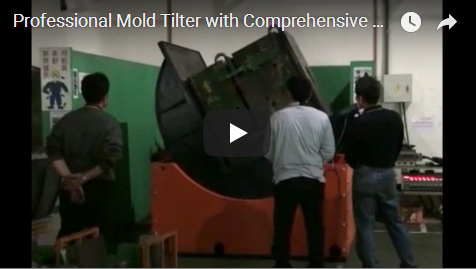The Challenge of Handling Large Sheet Materials
In modern fabrication, wood processing, and manufacturing environments, handling large, heavy panels—such as plywood, MDF, particleboard, or even sheet metal—presents significant logistical and safety challenges. Manual flipping or rotating of these cumbersome materials is not only labor-intensive and time-consuming but also carries a high risk of worker injury (e.g., back strain) and potential damage to the panels themselves. Achieving consistent processing on both sides demands a reliable, efficient, and safe solution.
Introducing the Panel Turnover Machine: Design, Structure, and Operation
The Panel Turnover Machine, often referred to as a Plywood Turner, is engineered specifically to address these challenges. It provides automated or semi-automated 180-degree rotation of large sheet goods, streamlining workflows and enhancing operational safety.
1. Core Functionality and Mechanism
At its heart, the machine employs a robust clamping and rotating mechanism. Typically, panels are fed onto a conveyor or placed directly into the machine's receiving area. Secure clamps, often pneumatically or hydraulically actuated and designed with non-marring surfaces, grip the panel edges firmly but gently. A powerful, controlled drive system then rotates the entire clamping assembly 180 degrees, effectively flipping the panel. Once rotated, the clamps release, and the panel can be moved to the next processing stage.
2. Key Structural Components and Design Considerations
Built for industrial durability, these machines typically feature:
- Heavy-Duty Steel Frame: Provides structural rigidity and stability to handle significant weight and operational forces. The design often prioritizes a minimal footprint while ensuring easy access for loading and unloading.
- Drive System: Utilizes reliable electric motors (often geared motors for high torque) coupled with chain drives, gearboxes, or direct drives to ensure smooth, consistent rotation. Speed control might be fixed or variable depending on the model.
- Clamping System: Precision-engineered clamps are critical. They must provide sufficient holding force without damaging panel surfaces or edges. Materials like high-density rubber or specialized polymers are often used for contact points. Adjustability for different panel thicknesses is a key design feature.
- Conveyor Integration (Optional): Many panel turners are designed for seamless integration into automated production lines, featuring powered roller or belt conveyors for input and output.
- Control Panel: Ranges from simple push-button controls for start/stop/rotate functions in semi-automatic models to sophisticated PLC (Programmable Logic Controller) systems with HMI (Human-Machine Interface) touchscreens in fully automated versions. These allow for parameter adjustments, sequence programming, and diagnostic feedback.
3. Technical Specification Overview
While specific parameters vary based on model and customization, here is a representative range of specifications.
Note: The parameters below represent typical capabilities. For exact specifications matching the equipment shown in the video or tailored to your unique requirements, please contact us directly.
- Machine Type: Semi-Automatic (with options for full automation)
- Year of Manufacture: 2023 (New Condition)
- Load Capacity: Typically up to 1000 kg (2200 lbs), customizable for heavier loads.
- Panel Size Compatibility:
- Maximum Length: 2500 mm (approx. 98 inches) - Customizable
- Maximum Width: 1300 mm (approx. 51 inches) - Customizable
- Thickness Range: Adjustable, e.g., 10mm - 100mm
- Rotation Cycle Time: Variable, often around 10-20 seconds (Up to 6 turns per minute depending on size/weight)
- Power Requirements: Commonly 380V/480V, 50/60Hz, three-phase (dependent on region and motor size)
- Approximate Machine Dimensions (L x W x H): 3500mm x 2000mm x 1500mm (Varies significantly with configuration)
- Approximate Machine Weight: 1500 kg (3300 lbs) - Varies based on capacity and features.
- Control System: Manual push-button controls; Optional upgrade to PLC with HMI.
- Safety Features: Emergency stop buttons, protective guarding or light curtains (optional), overload protection, secure clamping interlocks.
- Build Material: Primarily heavy-gauge structural steel.
- Warranty: Typically 1-5 years (example shown: 5 years).
- Origin: Varies by manufacturer (example shown: Made in Germany).
Enhanced Applications Across Key Industries
The versatility and efficiency of panel turnover machines make them invaluable in several sectors:
1. Wood Processing Plants: Boosting Throughput and Quality
In facilities producing plywood, MDF, OSB, or laminated panels, applying finishes, coatings, or performing sanding on both sides is common. The turnover machine:
- Reduces Bottlenecks: Quickly rotates panels between processes, significantly cutting down handling time compared to manual methods or cumbersome crane operations.
- Improves Safety: Eliminates hazardous manual flipping of heavy, awkward sheets.
- Minimizes Damage: Gentle, controlled handling prevents scratches, dents, or edge damage common with manual turning.
2. Furniture Manufacturing: Streamlining Production Flow
Furniture production often involves multiple steps like laminating, edge banding, CNC routing, painting, and assembly, frequently requiring access to both panel faces. The plywood turner:
- Integrates Seamlessly: Can be placed strategically within production cells or lines.
- Increases Efficiency: Allows for faster transitions between operations (e.g., sanding one side, flipping, then sanding the other).
- Ensures Consistency: Automated handling leads to more predictable cycle times and consistent product positioning for subsequent operations.

3. Building Material Manufacturing: Ensuring Precision and Control
For manufacturers of structural insulated panels (SIPs), decorative architectural panels, or other engineered building materials, consistent quality is paramount. The panel turnover machine:
- Facilitates Inspection: Allows easy access to both sides for quality control checks.
- Supports Double-Sided Processing: Essential for applying coatings, insulation, or laminates accurately on both faces.
- Handles Delicate Surfaces: Soft clamping options protect sensitive decorative finishes during rotation.
Operator Experience and Safety Considerations
Modern panel turnover machines prioritize ease of use and operator safety:
- User Interface: Intuitive controls (buttons or touchscreens) minimize training time. Automated versions can integrate with plant-wide control systems.
- Loading/Unloading: Designed for efficient integration with forklifts, vacuum lifters, or automated guided vehicles (AGVs).
- Maintenance: Access points for routine maintenance (lubrication, inspection) are typically incorporated into the design.
- Safety Compliance: Machines are usually built to comply with relevant safety standards (e.g., CE, OSHA), incorporating features like E-stops, safety interlocks on guards, and sensors to prevent operation under unsafe conditions.
Choosing the Right Panel Turnover Solution
Selecting the appropriate machine involves considering:
- Panel Characteristics: Maximum weight, dimensions (L x W x T), and material type.
- Throughput Requirements: Required cycle time and level of automation (semi-auto vs. fully integrated).
- Operating Environment: Available floor space, power supply, and integration needs with existing equipment.
- Budget: Balancing initial investment against long-term savings in labor, safety, and efficiency.
Conclusion: A Vital Investment in Efficiency and Safety
The Panel Turnover Machine / Plywood Turner is more than just handling equipment; it's a strategic investment for any operation dealing with large sheet materials. By automating the rotation process, businesses can significantly enhance production speed, improve worker safety, reduce material damage, and ensure greater consistency in their manufacturing processes. Whether in wood processing, furniture making, or building material production, this machine offers tangible benefits that contribute directly to a more efficient and profitable operation.
For detailed specifications on models suited to your application, or to discuss customization options, please contact us.
fhopepacking@gmail.com

